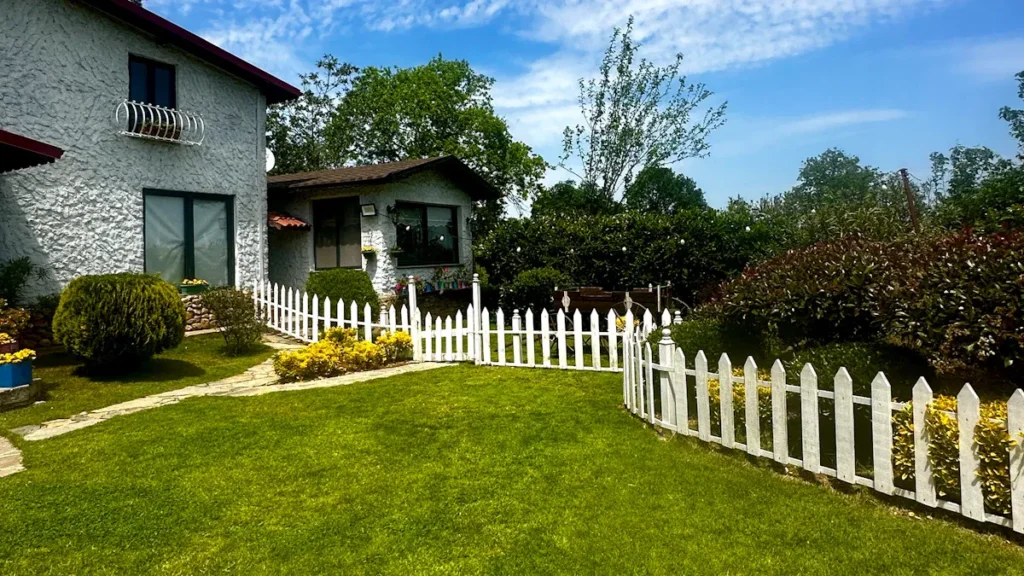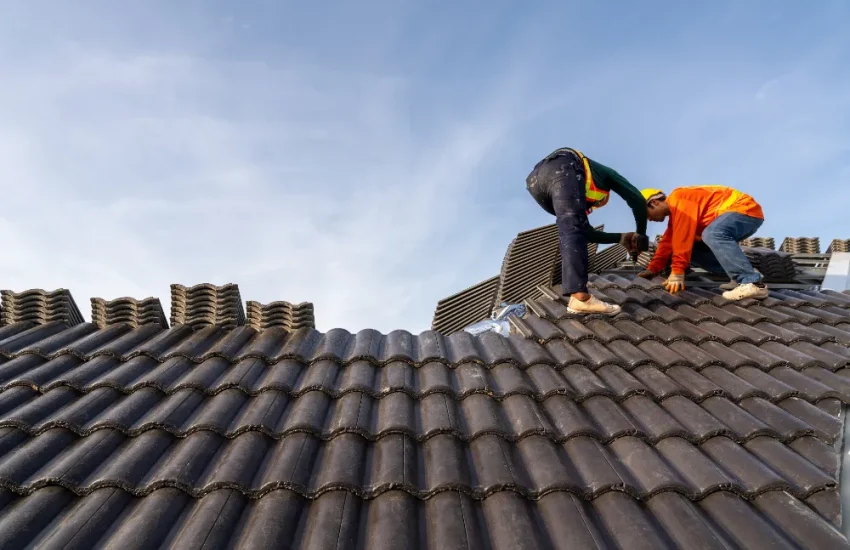Low-Maintenance Fencing Near Me: Materials and Finishes That Save Time
If you are searching for fencing near me, you probably want a fence that looks good, stands straight, and does not demand constant upkeep. I install, repair, and replace fences every week across West Yorkshire. I also write guides like this to help homeowners and site managers make clear choices. In this post I will explain which materials cut maintenance, which details matter, and how to plan a fence installation that lasts. I will keep it simple and practical so you can use it right away.
What “low-maintenance” really means
A fence is low-maintenance when you do not need to stain it every year, replace rotting posts, or chase blown panels after a gale. It should resist water, sun, and wind. It should sit off the ground so soil and mulch do not feed rot. It should use fixings that do not corrode. It should be easy to clean. If you are comparing options from fencing companies near me or fencers near me, use those points as your quick checklist.
Start with the posts
Posts decide how long a fence stays true. The two common choices are timber posts and concrete posts. Both can be low-maintenance when fitted right, but they suit different priorities.
Timber posts look warm and natural. They are lighter to handle and quick to cut. For low-maintenance results, use pressure-treated posts to Class 4 in the ground. That means the treatment penetrates deep enough to resist rot where the post meets wet soil. Set posts in proper post mix, bell the holes, and ensure water can run away from the post. Keep the top capped to shed water. If you do those steps, a timber post line can stand for many years with little attention.
Concrete posts are a strong choice if you want the lowest maintenance possible. They will not rot. Slotted concrete posts let you slide in panels or rails and make future swaps simple. They cost more to buy and move, but they hold up in exposed sites and clay soils. If you ask fencing contractors near me for a fence that shrugs off weather, concrete posts with concrete gravel boards are often the answer.
There is also a middle ground. If a single timber post fails on an otherwise sound fence, a concrete repair spur can save the day. We set the spur next to the failing post and bolt it on. It is a tidy fix and cheaper than rebuilding a full bay.
Keep panels off the ground
Rot loves damp timber. If panels sit in soil, they wick moisture and break down. A gravel board solves this. Timber boards look neat and are easy to stain, but they need some care over time. Concrete gravel boards are almost zero-maintenance and protect the whole bottom edge. They also add stiffness. If you want to reduce future fence repair near me calls, keep timber out of the soil.
Choose panel types that stand up to the weather
Closeboard or featheredge is my go-to for a long-lasting timber fence. It uses vertical pales fixed to horizontal rails. It is strong, easy to repair, and copes well in wind. If a pale breaks, you can replace a single piece rather than a full panel. Add a capping rail on top to shed water and protect the pale tips. That small strip of timber makes a big difference to lifespan.
Lap panels are a budget option. They go up fast and look fine when new. They need more care and are more likely to bow in high winds. If you want low-maintenance and the site is exposed, I would avoid lap.
Hit-and-miss panels allow air through. Each slat alternates from front to back. The look is modern and the wind load is lower, which is good on ridges and corners. Venetian or slatted panels also reduce wind pressure and look sharp, though they need careful fitting to keep lines straight.
Consider composite when you want the least upkeep
Composite panels are made from a mix of wood fibres and plastic. They do not rot, they do not need staining, and they clean with a soft brush and soapy water. The upfront price is higher, so composite fencing cost is often the first question I get. The price varies by height, brand, colour, caps, and the support system. You can mount composite boards in aluminium or concrete posts. The result is stable, smart, and close to maintenance-free. If you plan to stay in your property for a long time and you want a modern look, composite is worth a serious look.
Use the right fixings
Stainless steel or galvanised fixings are basic but vital. Use galvanised nails for featheredge pales and exterior-grade screws for rails, capping, and hardware. Cheap screws rust, stain timber, and snap during future work. Strong fixings save you time and reduce call-backs. On gates, use adjustable hinges so you can tweak alignment as timber settles.
Design for wind and movement
Wind is the main reason fences fail. You can build in features that reduce stress:
Set posts deep and mix the concrete well.
Keep bays at sensible widths. Shorter bays cope better.
Use hit-and-miss or slatted styles in exposed spots.
Add concrete or metal spurs to weak corners.
Fit rails with the crown down so water falls away.
Use capping rails to protect featheredge tops.
Leave small expansion gaps where boards meet posts.
None of that changes the look in a bad way. It just adds resilience.
Timber treatment that actually helps
Pressure-treated timber is the base level. It protects the core of the wood. You can then apply a stain or oil to slow down weathering and keep colour even. Use products designed for fences, not interior wood. Two light coats, applied in dry weather, is better than one thick coat. Focus on cut ends and drilled holes. That is where water gets in.
Dip-treated panels are cheaper, but the treatment sits near the surface. They need more frequent coats and more care if you want a long life. If you want low-maintenance, choose pressure-treated where you can.
Concrete details that avoid headaches
Concrete is strong, but it still needs care during install. Set posts plumb and brace them while the mix cures. Keep the post mix slightly domed at the top so rain runs off rather than pooling against the post. Keep the top of concrete posts capped or smooth so water does not sit in small pockets. When we fit concrete gravel boards, we check the line and level every bay to avoid a step that invites puddles.
Gates that match and last
A tidy gate makes a fence feel complete. For low-maintenance, specify a gate with a top capping rail and sealed edges. Use heavy-duty, galvanised hinges and latches. Mount the gate on a post that is up to the job. Many call-outs for gate problems start with an undersized hanging post. If you are booking fence installation near me and a gate is part of the brief, make sure the quote includes the right spec for the hanging post and hinge set.
When repair beats replacement
Not every tired fence needs ripping out. If posts are solid but a few panels have failed, swap panels and add capping. If one post is loose, a repair spur will buy many extra years. If a timber gravel board has rotted, upgrade to concrete and keep the rest. Fence repair near me is often the quickest route back to a straight, safe boundary. It also spreads cost and waste.
When replacement makes sense
Sometimes the best plan is to start fresh. If posts are rotten along a run, the rails are soft, and the panels are sinking, you will spend good money after bad on piecemeal fixes. A full strip-out and rebuild gives you new posts, straight lines, and a clean look. It also lets you switch to a low-maintenance spec from the ground up.
Plan the line and levels
A fence looks low-maintenance when it looks right. That starts with a straight line and a consistent top. On sloped ground you have two choices. You can step the fence, or you can rake it. Stepping means each bay rises like a staircase. It is simple and strong. Raking means the top runs at an angle. It looks smooth on gentle slopes but needs careful cutting. Either way, think about where the top meets paths, patios, and planting so you do not trap soil against timber.
Think about neighbours
Shared boundaries are where small issues become big ones. Before work starts, agree the line. Check for buried services. Confirm who keeps which side. If you plan to raise height, keep to the rules in your area. A short chat before the digger arrives is easier than a long row after.
Composite, timber, or metal: quick comparisons
Timber closeboard
Natural look, repairable in small parts, solid privacy. Needs a stain or oil every few years for best results.
Hit-and-miss timber
Less wind load, smart look, good for exposed sites. Similar care to closeboard.
Composite boards
Clean with soapy water, no stain needed, stable colour. Higher initial cost, long service life.
Steel or aluminium systems
Common on security perimeters and commercial yards. High strength, galvanised or powder-coated finish. Little to no upkeep beyond cleaning.
Budget and the long view
Upfront cost matters. So does the next ten years. Concrete posts with concrete gravel boards and featheredge bays will usually beat a budget lap-panel fence on total cost of ownership. Composite costs more on day one, but routine care is minimal. If you plan to move soon, a tidy timber spec can be the sweet spot. If you plan to stay, go stronger and lower maintenance.
A simple five-step care plan
- Walk the fence line twice a year. Check posts, rails, panels, fixings, and gates. Brush off soil at the base. Clean algae with warm water and a soft brush. Touch in stain or oil where needed. Keep plants off the fence so air can flow.
That list takes minutes and saves pounds. It also helps you spot small issues early so you can ring fencing contractors near me before a wobbly post becomes a fallen bay.
The value of local knowledge
Soils shift across West Yorkshire. Some gardens sit on heavy clay. Some face long winds across open fields. Terraced streets funnel gusts between houses. A fence that works in a calm, sheltered yard might not last on a ridge. Local installers see these patterns every week. When you speak to a fencing contractor near me, ask how they set posts in your soil type and how they handle wind on your street. Straight answers now prevent problems later.
What a good survey should cover
A proper site visit is not a quick glance over the gate. We measure runs and heights. We check access, trees, drains, manholes, and sheds. We look for buried services. We note slope and ground type. We talk through styles, heights, and colours. We agree where the line will sit and who owns which side. That is how we avoid rework and keep your job on time.
Clear quotes save headaches
A clear quote sets expectations. It should list materials, post type, gravel boards, capping, fixings, and finish. It should confirm waste removal and making good. It should give a sensible time frame. If you compare quotes from a fence company near me, check like for like. Low-maintenance results come from the details. If a quote cuts corners on posts, boards, or fixings, you pay for it later.
Why workmanship matters as much as materials
You can buy great materials and still end up with a fence that leans if the build is poor. We set lines and levels, brace posts, backfill and compact, and take our time on rails and pales. We fix each piece straight and square. We cap and seal exposed ends. We check gates for swing and clearance. That care is the real reason some fences last years longer than others.
Typical questions I get asked
How high can my fence be without permission
In many cases, up to 2 metres at the rear boundary. Fronts and highway boundaries are often lower. If in doubt, ask before you buy.
How long will a new fence last
It depends on spec and exposure. A well-built timber closeboard fence with concrete posts and gravel boards can last many years with minimal care. Composite systems can last longer still.
How do I pick between timber and composite
Look, budget, and appetite for care decide it. Timber suits classic gardens and is easy to repair in small pieces. Composite is good when you want a set-and-forget boundary with a modern look.
Can I mix materials
Yes. A common low-maintenance mix is concrete posts and gravel boards with timber closeboard above. It keeps the natural look while protecting the parts that touch the ground.
Book a build that lasts
If you want low-maintenance results, plan the spec and the details. Choose posts that suit your soil and exposure. Keep timber off the ground. Pick panels that cope with wind. Use proper fixings and a good finish. Work with people who fit fences every day and stand by the result. If you are ready to map out a job, you can read more about our approach to fence installation and what happens from survey to sign-off.
Local projects and areas we cover
We work across Leeds and the wider region. We handle tidy garden runs, big corner plots, and long back boundaries. We look after letting agents and small businesses too. If you are weighing up quotes from fencing contractors, our local page for Fencing Leeds explains the styles we fit day in, day out, and how we tailor builds to the street and soil.
Ready for advice, not pressure
If you have a fence that needs attention now, do not wait for winter wind to make the job bigger. Small issues grow fast when the weather turns. If you are at the stage of comparing options and want a straight view on repair vs replace, our page for fence repair near me sets out how we assess damage and the fixes we use. If you are planning a fresh boundary and want a spec that stays smart with minimal care, start with the basics in this guide and then talk to a local team that builds fences every week.
Low-maintenance fencing is not about luck. It is about the right materials, good design, and steady hands. Get those right and you will spend your weekends enjoying the garden, not fixing it. And if you are starting your search with fencing companies near me, keep this checklist close. It will help you ask the right questions and choose a build that looks after itself.




